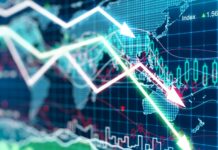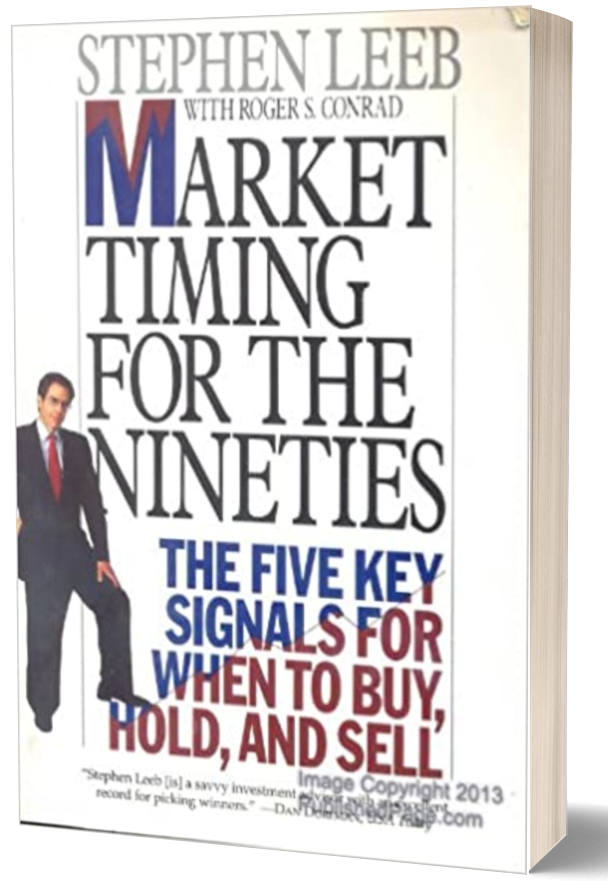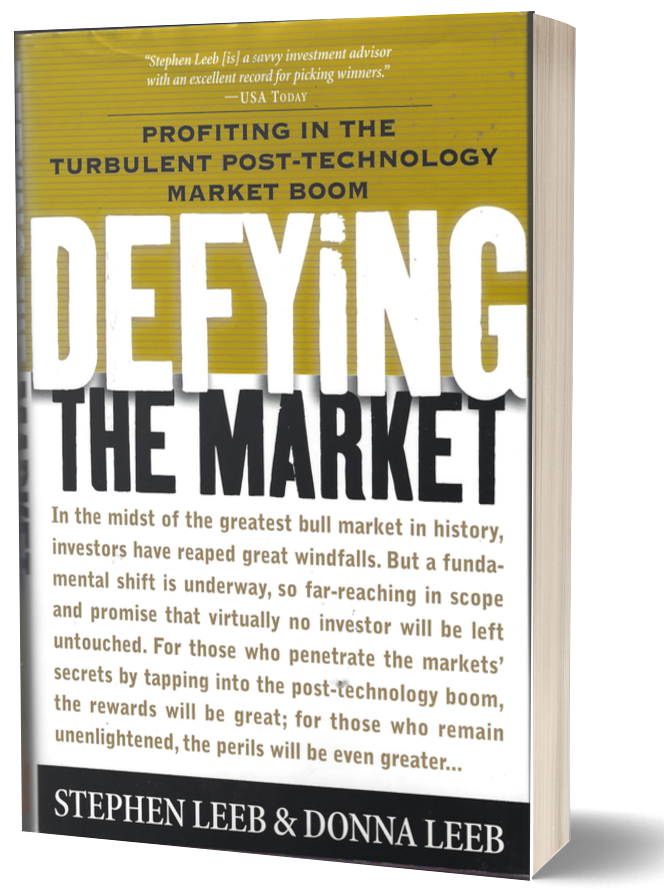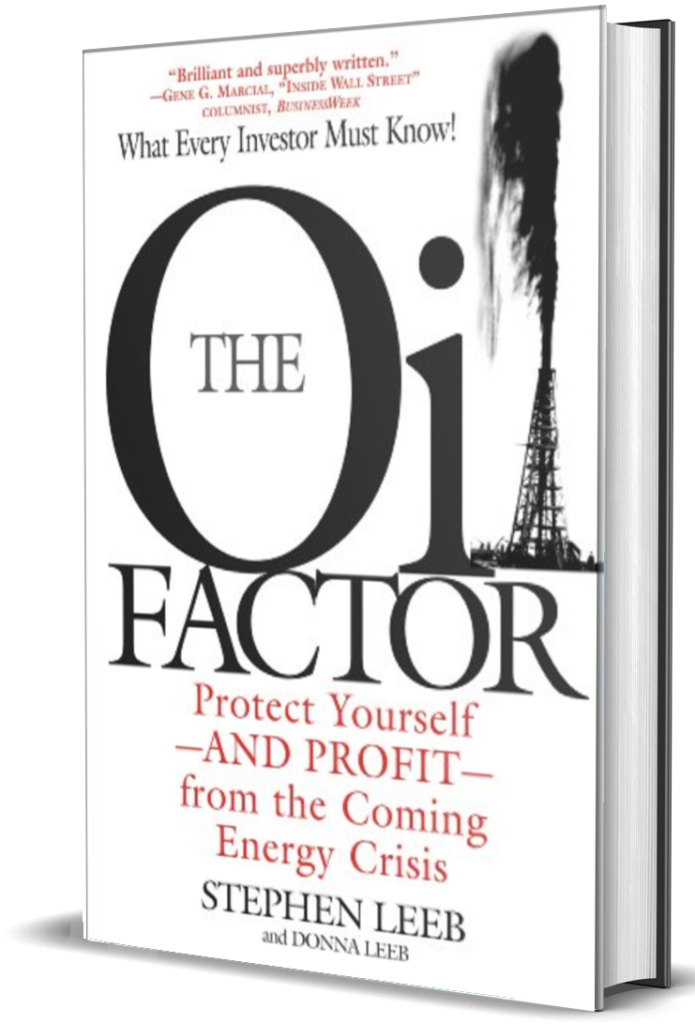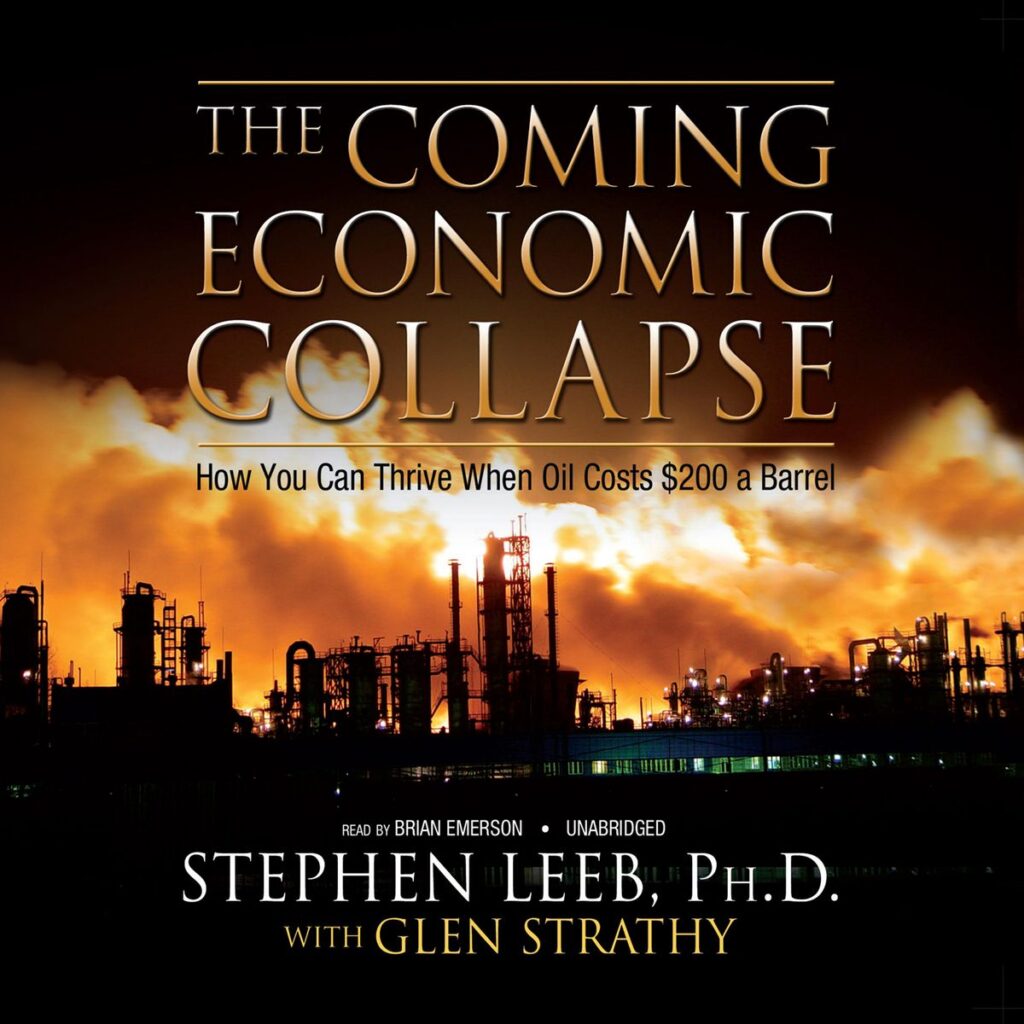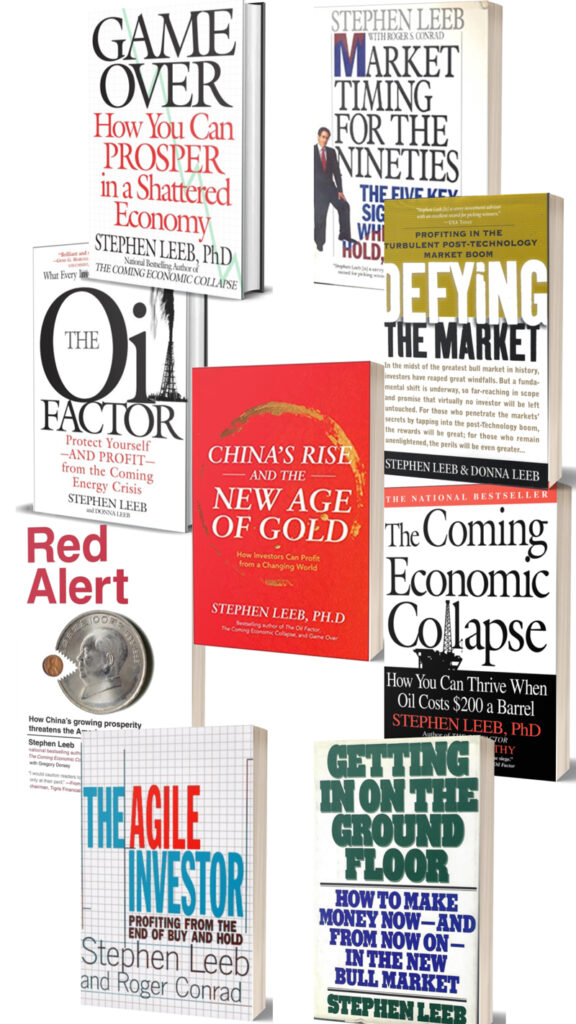Dr. Stephen Leeb – Notable Predictions Foreseeing the Secular (Long-Term) Bull Market
As the 1980s were underway, the mood on Wall Street was sour. Stocks were volatile. The Dow seemed stuck at the 1,000 level. The consensus on the Street was that it would continue struggling within a limited trading range.
“What I found was exciting. It turned out that the long-term bull markets of the 1920s and the 1949-65 period were indeed characterized by a confluence of specific economic circumstances that had been in place during those years and at virtually no other moment in this century – until 1982.”
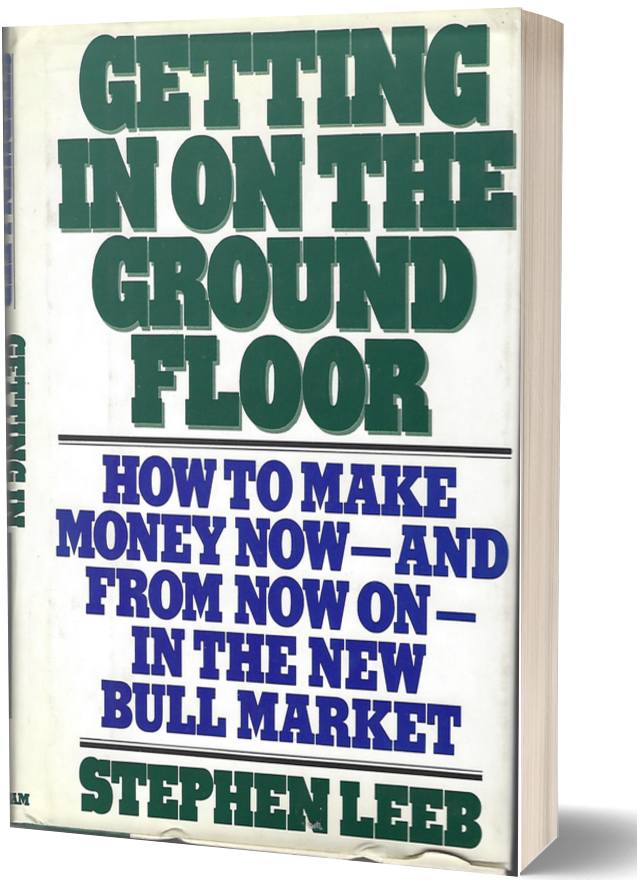
I didn’t agree. My research was persistently offered to subscribers to my investment letter and presented in my book Getting in on the Ground Floor. I urged my readers to get in early on a new era of declining inflation and sustained economic growth that would propel a powerful bull market for years.
In my next book, Market Timing for the Nineties: The Five Key Signals for When to Buy, Hold, and Sell (HarperBusiness, 1993, with Roger S. Conrad), I reaffirmed this outlook, writing:
“Based on the economic and market models I’ve show in this book now, in the early 1990’s, we have every reason to be optimistic about the decade ahead.
The key: inflation seems to be under control.”
Dot.Com Bust: Foreseeing the Limits of Tech
Defying the Market: Profiting in the Turbulent Post-Technology Market Boom (McGraw-Hill, 1999, with Donna Leeb) pointed to “high-flying stocks on the brink of a meltdown…”
Arguing that progress in tech was slowing down, it advised:
“For investors, one message is that only the most entrenched and best capitalized computer companies are worthy of their investment dollars …. if you could buy only five stocks, we wouldn’t include any in the computer area …. if you could buy only 10, the same thing….”
The flip side of slowing tech progress was the big gains investors could make in the right tech stocks: “…in a technological slowdown, a tech company that gains an edge on the competition can gain a stranglehold…. Microsoft…. upgrading its tried and true models… dominates the field.”
Defying the Market was when I first pounded the table about gold, trading below $275: “…gold could … come back to $800 and even to $1000 or higher. A buy-and-hold strategy for gold should make you a big winner.”
Instead of chasing tech stocks, I proposed a Model Portfolio with deflation hedges such as zero-coupon bonds and stocks leveraged to rising commodity prices, including gold miners. Over the next decade, this Model Portfolio dramatically outperformed the S&P 500.
Early 2000’s: Forecasting $100 Oil
“Oil prices are set to soar… Prices will likely reach $100 a barrel before the decade is out.”
The Oil Factor was published in 2004 when oil was trading at about $40, and my prediction that prices would soar led some to derisively dub me “the oil guy.” That didn’t bother me. The book laid out what I was convinced was a forthcoming mismatch between oil supply and oil demand. Oil climbed to over $150 a barrel in the next several years.
In 2000: Foreseeing the Impact of Falling Home Prices
“If home prices suddenly started to fall it could be the vicious circle to end all vicious circles…Could the policy rescue such a situation? Clearly it would be a far greater challenge than rescuing the economy in the wake of the tech bubble …It would take massive amounts of money. Interest rates would likely fall to zero. Government spending would need to reach unimaginably high levels.”
In 2011: Warning that China Threatens America’s Place in the World
“Many extremely well-schooled investors, economists, and analysts are convinced that China has passed its peak…We completely disagree…these naysayers are doing more harm than good by fostering…American complacency…an attitude that could bring this nation to its knees.”
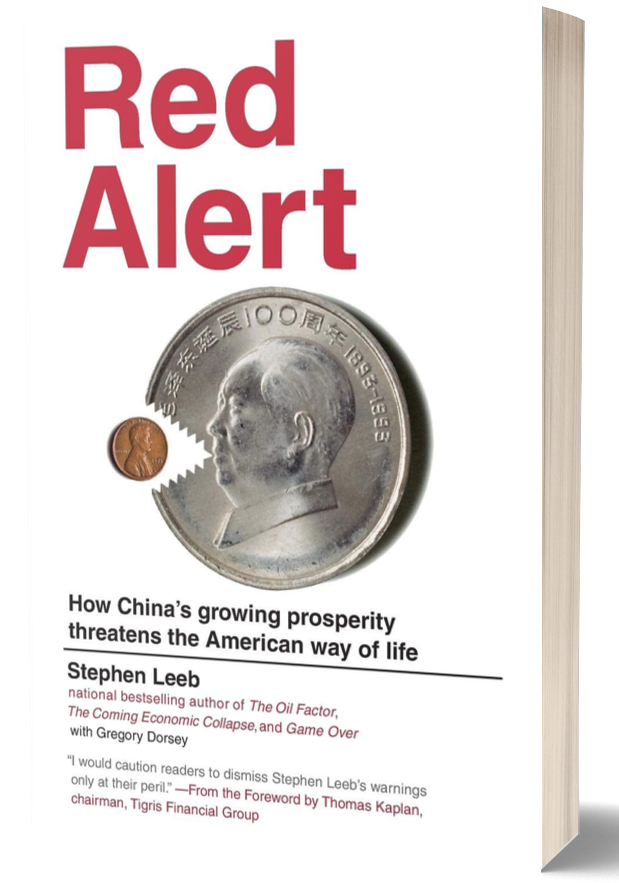
As many U.S. “experts” insisted China couldn’t keep economic growth going a decade ago, I warned that China was leapfrogging over the U.S. in key areas. In particular, I pointed to China’s accumulation of vital resources for its industries and military. That stood in sharp contrast to the U.S., which continues to grow ever more dependent on other countries – including China – for vital resources.
2020: Huge Gains Ahead for Gold
Now, in my latest book, China’s Rise and the New Age of Gold: How Investors Can Profit from a Changing World (McGraw-Hill Business, 2020, with Donna Leeb), I argue that gold – already the best-performing investment this century – will be rising to unparalleled heights in coming years as China pursues a host of ambitious objectives.
The book covers many areas to explain why gold is headed far higher. Here are a few samples:
THE PANDEMIC:
“…the U.S. response to the pandemic may well have bolstered the perception of China and other Eastern counties that it is not in their interest for the dollar to continue as the world’s dominant reserve currency.”
THE DEVELOPING WORLD:
“Developing countries used to be bit players in the global economy…Understanding how the developing world is different from what it used to be and different from the United States and the West is another important part of understanding the case for gold…For the first time ever the biggest part of the world is also the fastest growing. The implications are enormous…It portends accelerated demand for resources of all kinds.”
RESOURCE SCARCITIES:
“Increasingly producers must contend with resource bodies that are more challenging and costly to mine…The metaphor low-hanging fruit may be overused, but it’s apt…To think that commodity scarcities will be self-correcting is to fundamentally misunderstand how scarcities become self-reinforcing.”
ELECTRIC VEHICLES:
“While conventional gasoline-powered cars use between 18 and 49 pounds [of copper]…battery EVs need 183 pounds. More than a mile of copper wiring can be found in an EV’s stator winding.”
FRACKING:
“The complacency fostered by the seeming success of U.S. shale is dangerous. It overlooks that shale oil is more costly and more energy-intensive than conventional oil and that the costs of extracting oil from shale will inevitably rise, to a point where no amount of money will suffice to obtain any meaningful amount of oil at all…[Fracking] is a perfect example of short-term thinking, of America’s disheartening penchant in the past half century to seize on short-term fixes rather than invest in long-term goals.”
THE DOLLAR AS RESERVE CURRENCY:
“From China’s perspective, the dollar’s primacy is a holdover from a world that no longer exists. To assume that the dollar will stay on top forever is to be blissfully complacent…China’s accumulation of gold is one portent of the country’s intention to push the dollar off its singular throne and midwife a new monetary system linked to gold.”
THE FINANCIAL SECTOR:
“…In recent decades the financial sector…[has] accumulated outsized wealth while doing nothing genuinely useful or productive to justify it…the financial sector has dazzled and befuddled with shiny complex objects that benefit only the financial sector itself…The point isn’t that making money is immoral. It’s that the way the system has developed this past half century in this country has exacted enormous costs and squandered opportunities. This helps explain why the United States now stand on the brink of being eclipsed by China as that country pursues its agenda of securing resources, creating infrastructure, and dethroning the dollar to create a new reserve currency tied to gold.”
THE BULL MARKET IN GOLD
“…the bad news for investors is that they will need a lot of patience. The good news is that gold’s ultimate stopping point will likely be far higher than $24,000…If I’m at all correct in my assumptions and calculations, we are looking at what arguably will be the greatest bull market of all time…the bull market in gold, although it may suffer temporary pullbacks, won’t be a short-lived affair…Gold is the essential investment of these and of coming times, setting you and your family up for life in a world that will be changing in dramatic ways.”
REALITY VS. WISHFUL THINKING
“It is essential that we see the world not as it once was, not as we might wish it still were, but as it actually is.”
This sentence from the Preface of China’s Rise and the New Age of Gold could be my mantra, and it’s the guiding ethos behind this book: not to take moral stands but to ruthlessly assess what is happening. The world has been changing dramatically over the past two decades, as many of the trends I pointed to in my earlier books have continued to gain force. China’s Rise and the New Age of Gold represents my best effort to bring attention to critical new realities that will shape life for Americans in the coming years, whether we like it or not, whether we approve of China or not. For investors, the message is that a huge bull market in gold lies ahead as China pursues its long-term vision of what it sees as its rightful place in the world.
AUTHOR…INVESTMENT ADVISOR…MONEY MANAGER
Dr. Stephen Leeb is a prolific author, investment adviser, and money manager who has been analyzing financial markets for more than 40 years. He is known for his prescience in connecting the dots among hidden or overlooked trends – macroeconomic, scientific, and geopolitical – and accurately describing the investment implications, often going against the conventional wisdom. He is the author of nine books on investing and geopolitical trends including his most recent book, China’s Rise and the New Age of Gold: How Investors Can Profit from a Changing World (2020, McGraw-Hill Education). Stephen is chief investment officer of Leeb Capital Management in NYC.

Dr. Stephen Leeb Ph.D.








